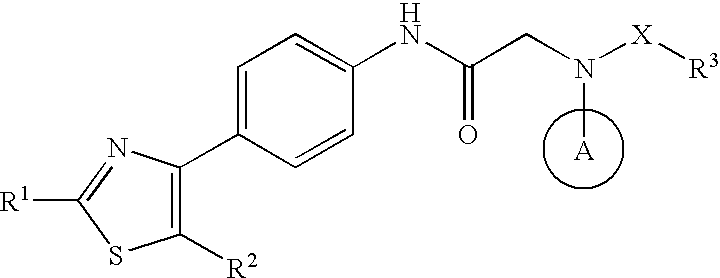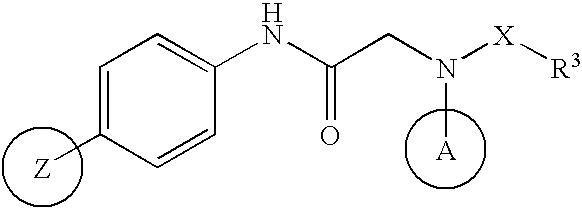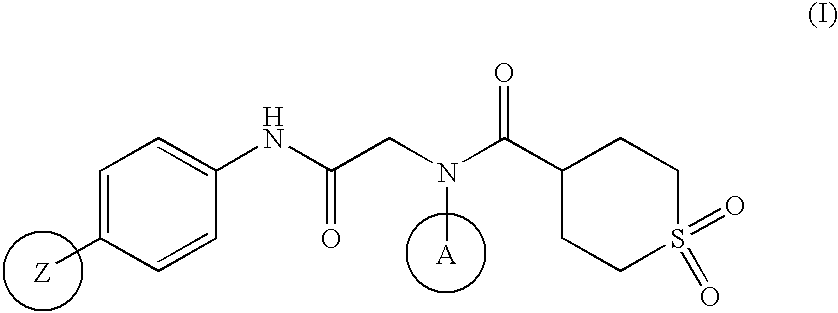Agent for prevention/treatment of disease caused by acyclovir-resistant herpesvirus
a technology of acyclovir and herpes virus, which is applied in the field of agents for preventing or treating diseases associated with acyclovir (acv)resistant herpes viruses, can solve the problems of losing therapeutic effect of every agent, and nothing is disclosed about the activity of these compounds against acv-resistant viruses, and achieve excellent antiviral activity, excellent pharmacokinetics, excellent antiviral activity
- Summary
- Abstract
- Description
- Claims
- Application Information
AI Technical Summary
Benefits of technology
Problems solved by technology
Method used
Image
Examples
example 1
Anti-ACV-resistant VZV Activity Assay
[0056]This assay was carried out in reference to the method described by Shigeta S. in The Journal of Infectious Diseases, 147, 3, 576-584, (1983). Specifically, 10,000 cells of human embryonic fibroblast (HEF) were inoculated into a 96 well microtiter plate using a growth medium (Eagle MEM (Nissui) supplemented with 10% (v / v) fetal bovine serum (FBS, Sigma)) and cultured at 37° C. for 4 days under 5% CO2 until they became a monolayer. After washing the cells with a maintenance medium, ACV-resistant VZV (Kanno-BrACV-R strain) which had been diluted with the maintenance medium (Eagle MEM supplemented with 2% FBS) to a viral titer of from 20 to 70 pfu / 100 μl was inoculated therein in 100 μl / well portions. The plate was centrifuged at room temperature at 2000 rpm for 20 minutes and then incubated at 37° C. for 3 hours under 5% CO2 for infection with VZV. After washing three times with the maintenance medium 100 μl of each test drug diluted to an app...
example 2
Anti-ACV-Resistant HSV-1 Activity Assay
[0058]A total of from 100,000 to 150,000 cells of an African green monkey kidney cell (Vero cell) were inoculated into a 24 well plate using a growth medium (Eagle MEM (Nissui) supplemented with 10% FBS) and cultured at 37° C. for 3 to 4 days under 5% CO2 until they became a monolayer. After washing the cells with a maintenance medium, ACV-resistant HSV-1 (A4-3ACV-R strain) which had been diluted with the maintenance medium (Eagle MEM supplemented with 2% FBS) to a viral titer of from 100 to 250 pfu / 200 μl was inoculated therein in 200 μl / well portions. The plate was centrifuged at room temperature at 1500 rpm for 40 minutes and then incubated at 37° C. for 1 hour under 5% CO2 for infection with HSV-1. After washing three times with the maintenance medium, 100 μl of each test drug diluted to an appropriate concentration with the maintenance medium was added to each well. After culturing the cells at 37° C. for 3 to 4 days under 5% CO2, 10% form...
example 3
Pharmacokinetics in in Vivo Animal Model
[0060]Using a cutaneous HSV-1 infection mouse model prepared in reference to the method of H. Machida et al. (Antiviral Res., 1992, 17, 133-143), the in vivo pharmacokinetics of the compounds of the present invention was tested using an animal model. The skin of each HR-1 hairless mouse [female, 7 weeks of age] was scratched lengthwise and breadthwise several times using a needle and a virus suspension (HSV-1 strain WT-51, 1.5×104 PFU / 15 μl) was dropped to the scarified region for infection, while anesthetized with diethyl ether.
[0061]Tested compounds were administered orally as a methyl cellulose suspension, except for compounds marked with asterisk which were dissolved in 20% Cremophor EL (Nacalai Tesque) / 20% polyethylene glycol (PEG) 400 / 60% H2O solution, starting at 3 hours after the infection, and then at a dose of 10 mg / kg twice a day for 5 days. The symptom of the skin lesion caused by HSV-1 infection were classified in the following sc...
PUM
| Property | Measurement | Unit |
|---|---|---|
| Fraction | aaaaa | aaaaa |
| Inhibition | aaaaa | aaaaa |
| Inhibition | aaaaa | aaaaa |
Abstract
Description
Claims
Application Information
 Login to View More
Login to View More - R&D
- Intellectual Property
- Life Sciences
- Materials
- Tech Scout
- Unparalleled Data Quality
- Higher Quality Content
- 60% Fewer Hallucinations
Browse by: Latest US Patents, China's latest patents, Technical Efficacy Thesaurus, Application Domain, Technology Topic, Popular Technical Reports.
© 2025 PatSnap. All rights reserved.Legal|Privacy policy|Modern Slavery Act Transparency Statement|Sitemap|About US| Contact US: help@patsnap.com



